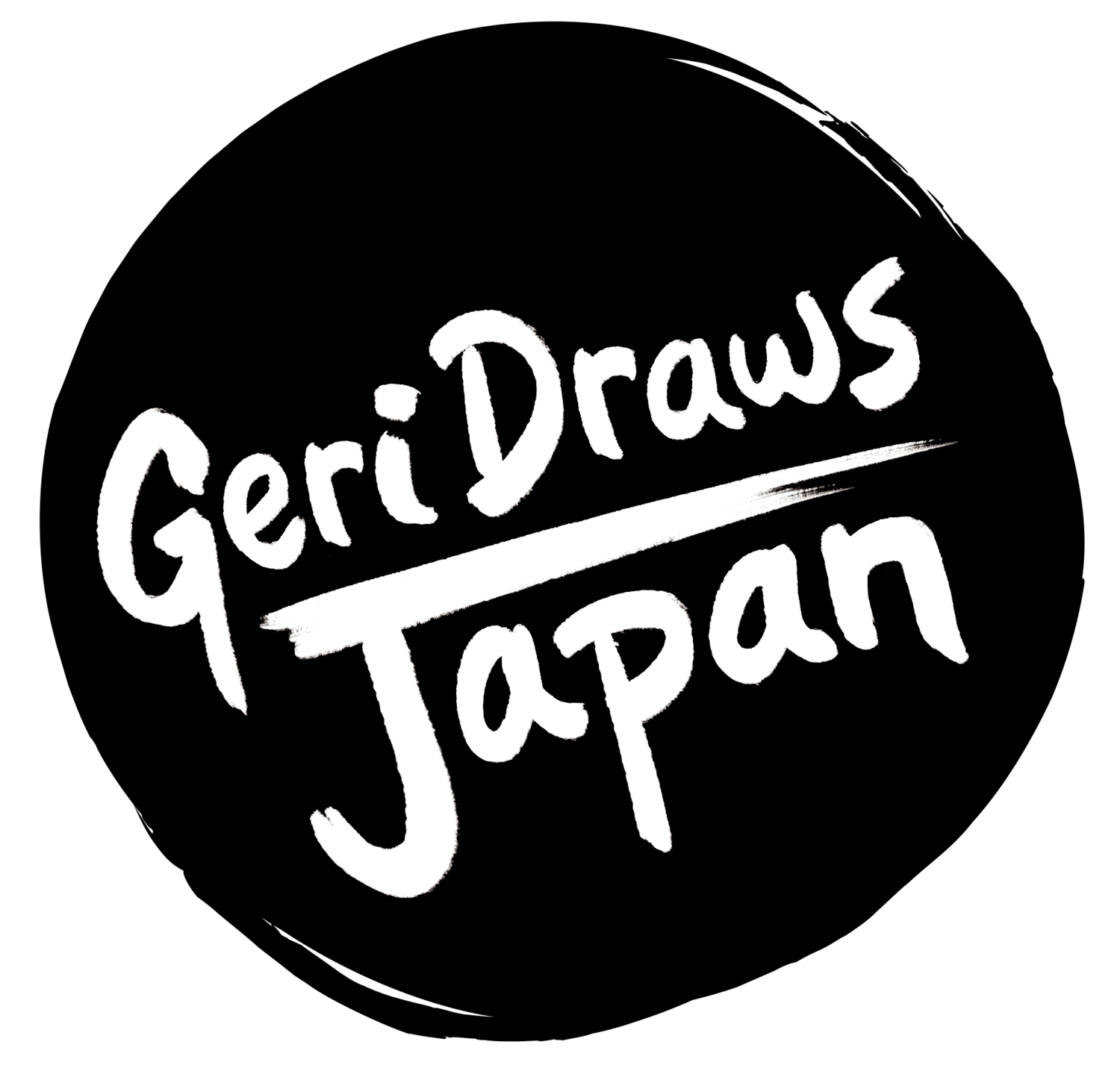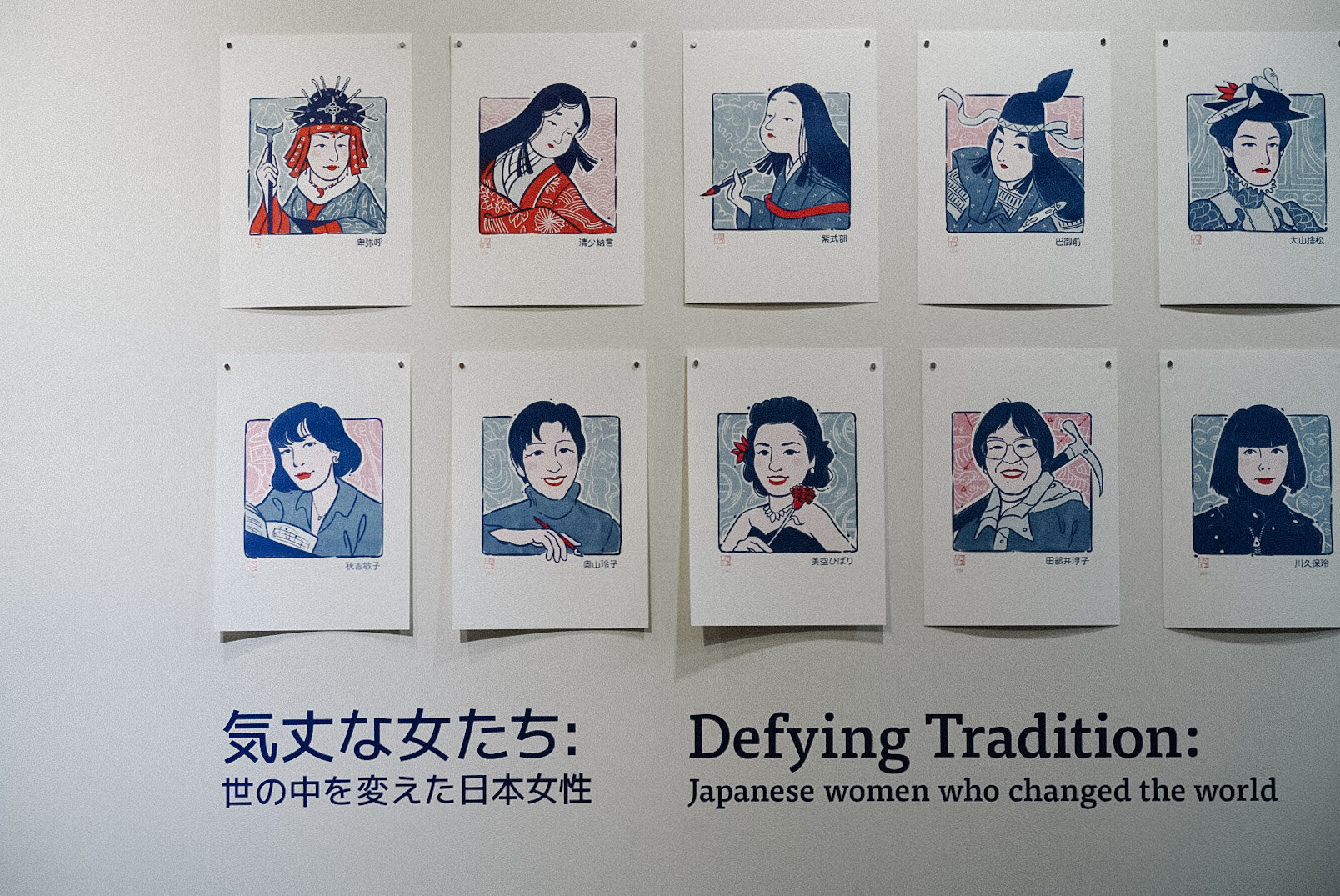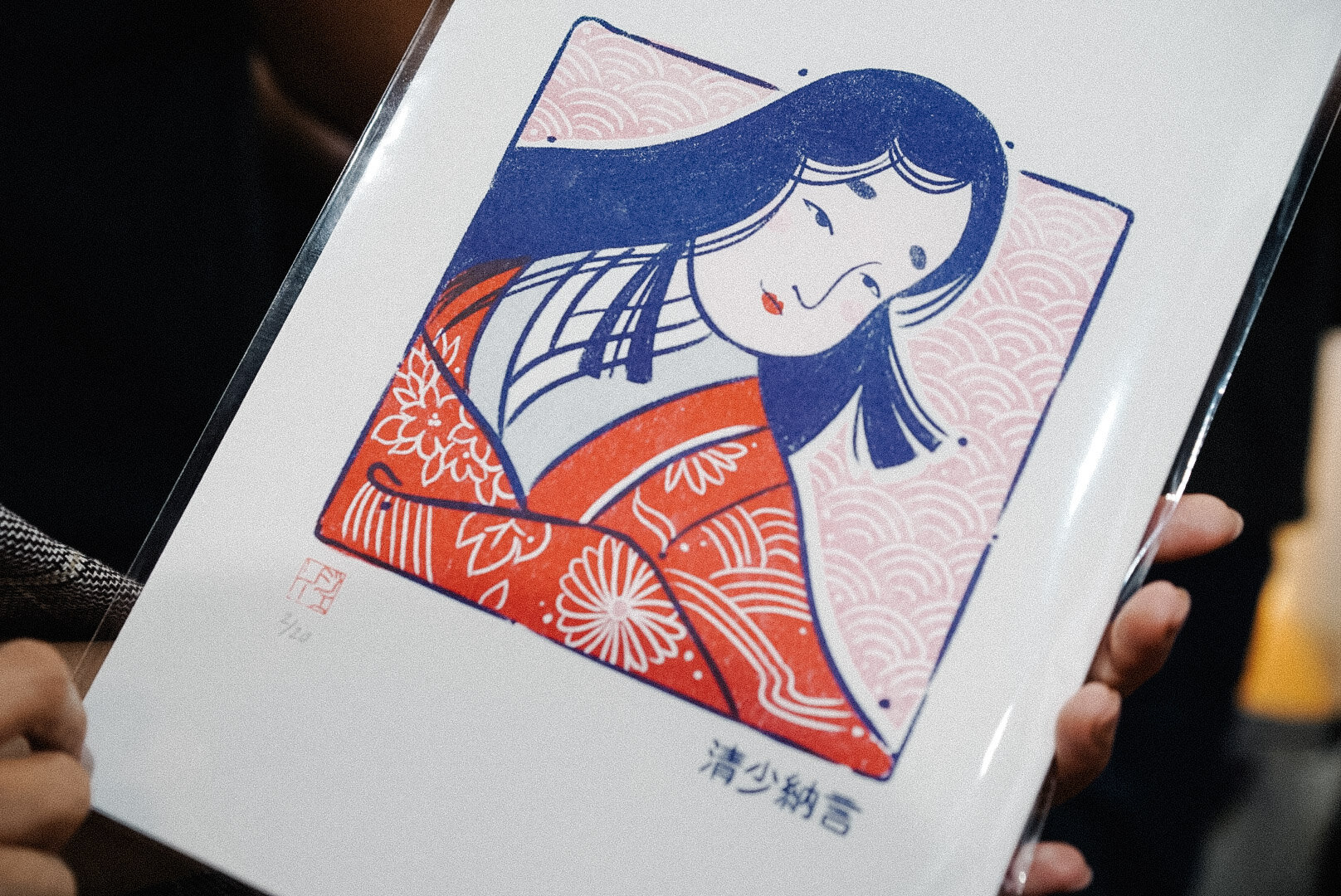Kusama Yayoi 草間彌生 - A4 Riso Print (Signed and Numbered)
Kusama Yayoi 草間彌生
Contemporary artist
芸術家 (1929年3月22日–)
彼女は自分のアイデアを盗んで利益を得た男性の芸術家たちに失望しました。彼女の家族は彼女の作品を深く恥じており、彼女は何度も自殺をしようとしました。
Kusama was born in Nagano to a family who did not support her creative efforts. Her mother was physically abusive to her and took away her artwork to discourage her. She sent young Kusama to spy on her father who was frequently involved in extra-marital affairs, instilling in her a fear that developed into a lifelong contempt for sexuality. At age ten, she started experiencing hallucinations—ones she described as a series of flashing lights, fields of dots, talking flowers, and fabric patterns springing to life.
Her traumatic childhood and hallucinations are said to have influenced the themes of her artwork for the rest of her life. She began painting canvases, floors, walls, and even naked models with “infinity nets” of polka dots. Frustrated with the ideals of Japanese society, describing it as "too small, too servile, too feudalistic, and too scornful of women,” Kusama moved to America. She quickly grew close to the New York art scene and worked herself to the point of hospitalisation.
Kusama became frustrated with male artists who copied her creativity and profited off it. Her art was often overlooked, and she struggled to make ends meet. Her family were deeply ashamed of the nudity she incorporated into her work, and on numerous occasions she attempted suicide. In 1973, Kusama returned to Japan and a few laters later, she entered a hospital for the mentally ill, where she has been voluntarily living ever since.
After leaving America, Kusama’s work was almost forgotten until a revived interest in the late 1980s. Today, she has become one of the most famous and recognisable artists in the world. In 2006, she received the Praemium Imperiale, one of Japan's highest honours for internationally recognised artists, making her the first Japanese woman to do so. As of 2012, her work has the highest earnings of any living woman artist.
What is a riso print?
These prints use risograph technology, a method of printing developed in Japan in the mid-1980s. It can be described as a mix between screenprinting and photocopying. The risograph process produces prints with extremely vibrant, crisp inks, and sometimes these inks overlap during the printing process to create interesting and unique details. These soy-based inks also have a lower environmental impact.
Product details
Printed in Tokyo, Japan by Hand Saw Press print studio. Each print is A4 size (210 x 297 mm / 8.27 x 11.69 in) and printed on Natural White 186gsm Takeo Araveal paper. Acid-free and FSC Approved.
Each print is signed with a traditional Japanese ‘hanko’ artist stamp and hand-numbered from a limited edition of 20. Prints are packaged in cello bags with rigid cardboard inserts and shipped in flat mailers.
Please note that frames are not included.
Delivery times & prices
We ship worldwide. 日本へ国際郵便で送ります。
UK deliveries: 3-4 working days via Royal Mail 1st class
International deliveries available via Royal Mail International Standard Airmail
Prices calculated during checkout
For more information on shipping times for international deliveries, please check the delivery & returns page.
Kusama Yayoi 草間彌生
Contemporary artist
芸術家 (1929年3月22日–)
彼女は自分のアイデアを盗んで利益を得た男性の芸術家たちに失望しました。彼女の家族は彼女の作品を深く恥じており、彼女は何度も自殺をしようとしました。
Kusama was born in Nagano to a family who did not support her creative efforts. Her mother was physically abusive to her and took away her artwork to discourage her. She sent young Kusama to spy on her father who was frequently involved in extra-marital affairs, instilling in her a fear that developed into a lifelong contempt for sexuality. At age ten, she started experiencing hallucinations—ones she described as a series of flashing lights, fields of dots, talking flowers, and fabric patterns springing to life.
Her traumatic childhood and hallucinations are said to have influenced the themes of her artwork for the rest of her life. She began painting canvases, floors, walls, and even naked models with “infinity nets” of polka dots. Frustrated with the ideals of Japanese society, describing it as "too small, too servile, too feudalistic, and too scornful of women,” Kusama moved to America. She quickly grew close to the New York art scene and worked herself to the point of hospitalisation.
Kusama became frustrated with male artists who copied her creativity and profited off it. Her art was often overlooked, and she struggled to make ends meet. Her family were deeply ashamed of the nudity she incorporated into her work, and on numerous occasions she attempted suicide. In 1973, Kusama returned to Japan and a few laters later, she entered a hospital for the mentally ill, where she has been voluntarily living ever since.
After leaving America, Kusama’s work was almost forgotten until a revived interest in the late 1980s. Today, she has become one of the most famous and recognisable artists in the world. In 2006, she received the Praemium Imperiale, one of Japan's highest honours for internationally recognised artists, making her the first Japanese woman to do so. As of 2012, her work has the highest earnings of any living woman artist.
What is a riso print?
These prints use risograph technology, a method of printing developed in Japan in the mid-1980s. It can be described as a mix between screenprinting and photocopying. The risograph process produces prints with extremely vibrant, crisp inks, and sometimes these inks overlap during the printing process to create interesting and unique details. These soy-based inks also have a lower environmental impact.
Product details
Printed in Tokyo, Japan by Hand Saw Press print studio. Each print is A4 size (210 x 297 mm / 8.27 x 11.69 in) and printed on Natural White 186gsm Takeo Araveal paper. Acid-free and FSC Approved.
Each print is signed with a traditional Japanese ‘hanko’ artist stamp and hand-numbered from a limited edition of 20. Prints are packaged in cello bags with rigid cardboard inserts and shipped in flat mailers.
Please note that frames are not included.
Delivery times & prices
We ship worldwide. 日本へ国際郵便で送ります。
UK deliveries: 3-4 working days via Royal Mail 1st class
International deliveries available via Royal Mail International Standard Airmail
Prices calculated during checkout
For more information on shipping times for international deliveries, please check the delivery & returns page.
Kusama Yayoi 草間彌生
Contemporary artist
芸術家 (1929年3月22日–)
彼女は自分のアイデアを盗んで利益を得た男性の芸術家たちに失望しました。彼女の家族は彼女の作品を深く恥じており、彼女は何度も自殺をしようとしました。
Kusama was born in Nagano to a family who did not support her creative efforts. Her mother was physically abusive to her and took away her artwork to discourage her. She sent young Kusama to spy on her father who was frequently involved in extra-marital affairs, instilling in her a fear that developed into a lifelong contempt for sexuality. At age ten, she started experiencing hallucinations—ones she described as a series of flashing lights, fields of dots, talking flowers, and fabric patterns springing to life.
Her traumatic childhood and hallucinations are said to have influenced the themes of her artwork for the rest of her life. She began painting canvases, floors, walls, and even naked models with “infinity nets” of polka dots. Frustrated with the ideals of Japanese society, describing it as "too small, too servile, too feudalistic, and too scornful of women,” Kusama moved to America. She quickly grew close to the New York art scene and worked herself to the point of hospitalisation.
Kusama became frustrated with male artists who copied her creativity and profited off it. Her art was often overlooked, and she struggled to make ends meet. Her family were deeply ashamed of the nudity she incorporated into her work, and on numerous occasions she attempted suicide. In 1973, Kusama returned to Japan and a few laters later, she entered a hospital for the mentally ill, where she has been voluntarily living ever since.
After leaving America, Kusama’s work was almost forgotten until a revived interest in the late 1980s. Today, she has become one of the most famous and recognisable artists in the world. In 2006, she received the Praemium Imperiale, one of Japan's highest honours for internationally recognised artists, making her the first Japanese woman to do so. As of 2012, her work has the highest earnings of any living woman artist.
What is a riso print?
These prints use risograph technology, a method of printing developed in Japan in the mid-1980s. It can be described as a mix between screenprinting and photocopying. The risograph process produces prints with extremely vibrant, crisp inks, and sometimes these inks overlap during the printing process to create interesting and unique details. These soy-based inks also have a lower environmental impact.
Product details
Printed in Tokyo, Japan by Hand Saw Press print studio. Each print is A4 size (210 x 297 mm / 8.27 x 11.69 in) and printed on Natural White 186gsm Takeo Araveal paper. Acid-free and FSC Approved.
Each print is signed with a traditional Japanese ‘hanko’ artist stamp and hand-numbered from a limited edition of 20. Prints are packaged in cello bags with rigid cardboard inserts and shipped in flat mailers.
Please note that frames are not included.
Delivery times & prices
We ship worldwide. 日本へ国際郵便で送ります。
UK deliveries: 3-4 working days via Royal Mail 1st class
International deliveries available via Royal Mail International Standard Airmail
Prices calculated during checkout
For more information on shipping times for international deliveries, please check the delivery & returns page.










